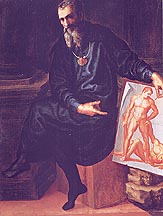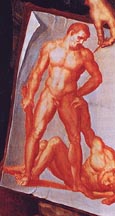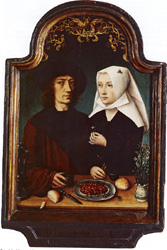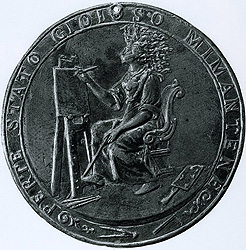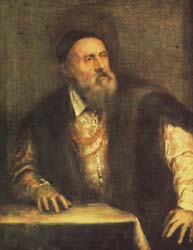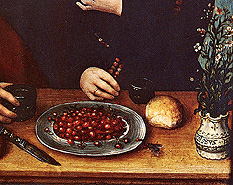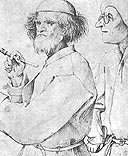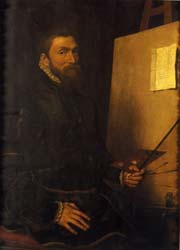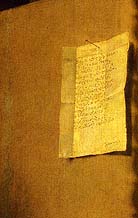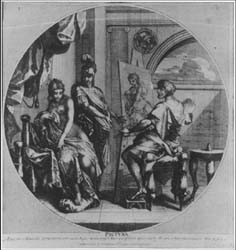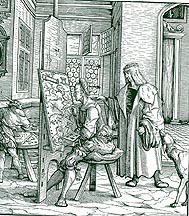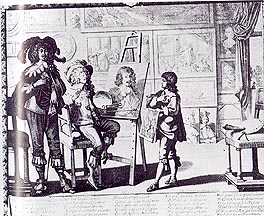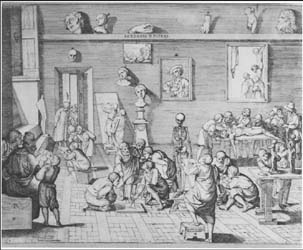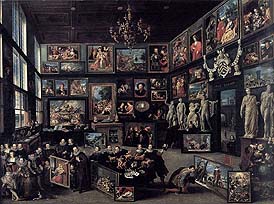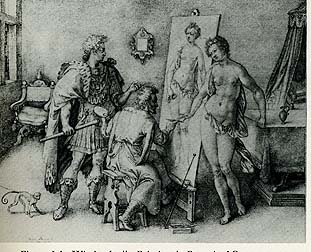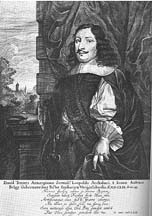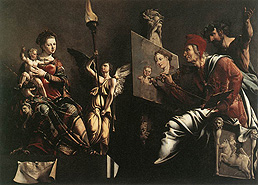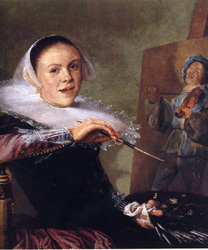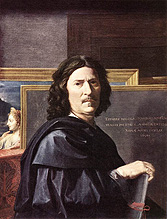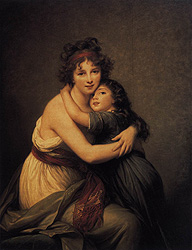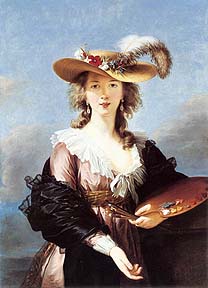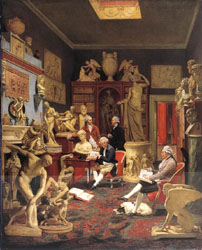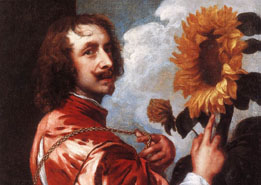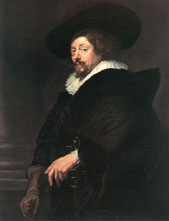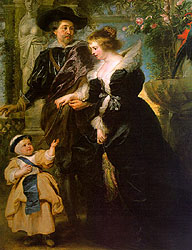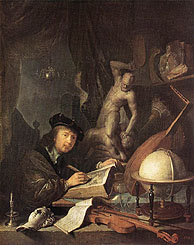
Titian, Self-Portrait, c. 1562. The gold chains worn by Titian are probably those given to him by the Emperor Charles V. Significantly Titian represents himself without the "tools of the trade." Along with his chains, his clothing, especially his fur coat, identify Titian as a man of high social standing. |
 |
|
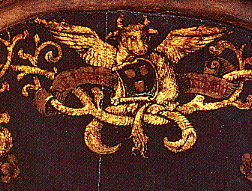 |
Antonio Mor, Self-Portrait, 1558 While Mor shows himself holding the tools of the trade --palette, brush, rag, and mahlstick-- he is dressed in the manner of a gentleman. An inscription along the side of the easel identifies his status: PHILIPPI HISP. REG. PICTOR(Painter of Philip the King of Spain). The poem in Greek tacked to the canvas places Mor within the context of the tradition of the court painter going back to Apelles.
|
The text of the poem in Greek tacked to the canvas in Mor's self-portrait compares Mor's work to that of Zeuxis and Apelles: By Jove, of whom is this painting?/Of the best among painters./ Who, above Apelles and Zeus,/And all the other ancients and moderns./ Has obtained mastery by means of his art./ Yes, he has made this portrait of himself. / He painted it with his own skilled hand. / He studied himself in a metal, / In front of the mirror. /Oh what an excellent artist! / The counterfeit Mor which you now behold, /Mor...presently speak. The choice to use Greek in this poem places it within the context of Humanism. The poem can be seen to be a literary depiction of the artist and thus draws the comparison between poetry and painting. This was a theme in Humanist discussions about art and relates to a comparison made by Horace, ut pictura poesis . The illusionistic representation of the note with its folds tacked to the surface of the canvas was also intended as a statement of the abilities of the artist. |
Sebastien Bourdon, Apelles Painting Campaspe. The label of the engraving identifies the image as "Pictura." The inscription narrates the story of Alexander's gift of Campaspe to the painter who had fallen in love with her, and provides the appropriate reference to Pliny, the source of the legend ( Natural History, xxxV.86-87). |
Hans Burgkmair, The Pleasure and Aptitude the Emperor Shows for Painting, woodcut. This early sixteenth century woodcut was made of book of prints entitled the Weisskunig, which celebrates the Emperor Maximilian as a wise king. The Emperor visiting the studio of his painter recalls the ancient stories of Alexander the Great visiting the studio of Apelles.
Abraham Bosse, The Painter's Studio, engraving. The painter's assistant holds up an engraving of the traditional workshop with the painter working to support his family. This is in marked contrast to the noble status of the court artist.
P. F. Alberti, Academy of Painters. The elevated status of artistic training in the Academy is suggested in this print by the close borrowing of a number of figure groups on Raphael's School of Athens. |
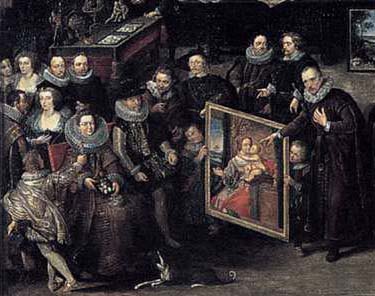
Cornelis van der Geest, on the right, points to a painting by Quentin Massys of the Virgin and Child,. To the left center is seated the Archduchess Isabella accompanied to her left by her husband the Archduke Albert. Over the left shoulder of the Archduke appears Peter Paul Rubens who had been appointed his court painter in 1609. Rubens's painting of the Battle of the Greeks and Amazons from 1618 appears on the wall almost directly above him. Anthony Van Dyck can be identified as the man gesticulating behind the Massys painting.
David Teniers's portrait, engraved by Lucas Vorsterman after a painting by Peter Thys, is dated 1659. It clearly reflects his status as a court painter. His clothing and the format of the portrait define his social status. The two gold chains and medallion with the profile portrait of the Archduke signify his membership in the Leopold's court. He also has a large key that hangs from his waist. This key was the symbol of his office as Ayuda de Cámara, or member of the chamber of the Duke.
Johan Zoffany, Charles Towneley and friends in the Park Street Gallery, Westminster,1783.

After Johan Zoffany, The Academicians of the Royal Academy, 1772. For the identifications of the different figures see the National Portrait Gallery's page. Members of the Royal Academy are seen here around a nude male model. Since women were excluded from life drawing classes, Zoffany has included the two female members of the Royal Academy --Angelica Kauffman and Mary Moser-- as portraits hanging on the wall behind the model on the right.
